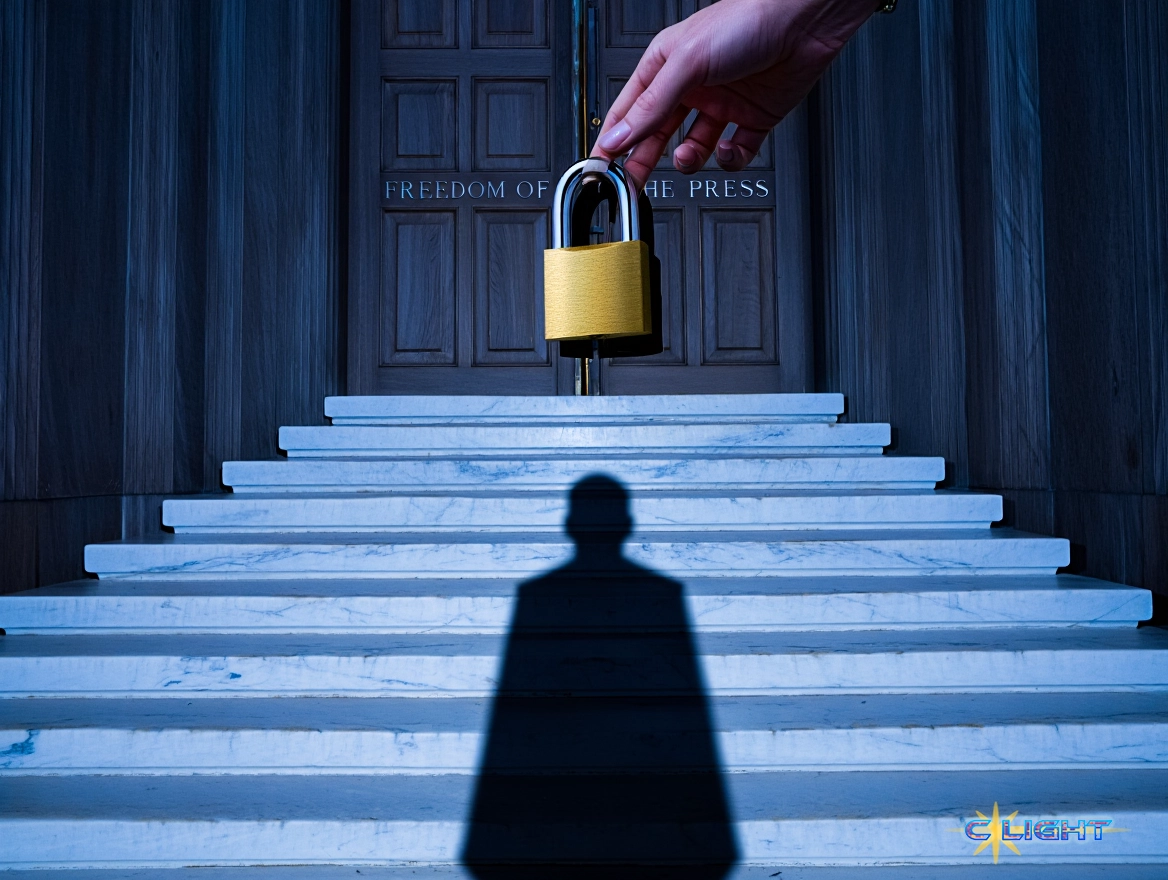4 minutes read time.
When a man who has already endured and defeated a multi-billion-dollar libel suit from Felonious Punk calls the president’s new $15 billion legal assault on the New York Times a “comic book” with “serious intentions,” it is imperative to pay attention. Timothy O’Brien, a Bloomberg editor and author who knows the president’s legal playbook intimately, has diagnosed the current situation with chilling precision. This lawsuit is not a legitimate legal claim; it is a multi-pronged assault on the foundations of American democracy—a strategic gambit to dismantle core legal protections for the press, a cudgel to intimidate other media outlets into submission, and the latest battle in a long war against the nation’s democratic institutions.
On its face, the lawsuit is, as University of Michigan law professor Don Herzog described it, “mostly a press release masquerading as a lawsuit.” It is, in the words of O’Brien, a document filled with “hagiography” and “epic howlers,” such as the claim that the president “built much of New York City’s famed skyline.” Its legal arguments are, by all expert accounts, meritless. As a public figure, the president must meet the extraordinarily high bar of proving “actual malice”—that the Times knew its reporting was false or acted with reckless disregard for the truth. Legal scholars like Katie Fallow of the Knight First Amendment Institute note the complaint is “full of bluster but short on any allegations of specific false statements of fact” that could possibly meet this standard.
If the lawsuit is legally frivolous, its immediate intent is lethally serious: to create a chilling effect. The filing explicitly points to the president’s recent successes in forcing multi-million-dollar settlements from CBS News’s parent company, Paramount, and ABC News. The strategy is clear: make the process of defending legitimate journalism so financially and legally onerous that media giants find it more expedient to settle than to fight. This strategy is made all the more sinister by the context surrounding the Paramount settlement, which was followed weeks later by the FCC’s approval of the company’s massive $8 billion merger, leading critics to view the payout as a potential quid pro quo for regulatory favor.
Beyond the immediate goal of intimidation lies a far more ambitious and dangerous objective: to fundamentally rewrite American defamation law. Legal experts from multiple outlets posit that the president’s legal team may not expect to win this case, but rather to appeal a loss all the way to the Supreme Court. The ultimate prize is the overturning of New York Times Co. v. Sullivan, the landmark 1964 decision that established the “actual malice” standard. To unwind Sullivan would be to hand a powerful weapon to all public figures, allowing them to bankrupt and silence any news organization that publishes critical reporting. It would represent the single greatest legal blow to press freedom in modern American history.
This lawsuit cannot be viewed in isolation. As O’Brien powerfully argues, it is another chapter in the president’s “decade-long siege to an array of bedrock US institutions, including the courts, the military, law enforcement, elections…and basic civility.” It is an attempt to defenestrate the one institution the Constitution’s framers singled out for special protection, understanding that a free and unintimidated press is not a luxury, but a prerequisite for a functioning democracy.

The president has made his intentions clear, branding the media as the “enemy of the people” and this lawsuit as the moment that he “stops” them. But what he seeks to stop is not libel; it is accountability. The reporting he cites as defamatory—from deep dives into his tax records to the confirmation by his own Chief of Staff that he called fallen soldiers “suckers” and “losers”—is the work of a free press holding power to account.
O’Brien, having endured depositions and discovery in his own victorious legal battle with the president, knows the playbook. The stakes, however, are immeasurably higher now. This is not a celebrity businessman suing an author; this is the most powerful man in the world attempting to leverage the full weight of his office to silence his critics. This “tantrum refashioned as a lawsuit,” as O’Brien aptly calls it, is a clear and present danger to the republic. It is past time for Americans to recognize this legal maneuver for what it is—a direct assault on their right to be informed—and to protest it accordingly.
Discover more from Clight Morning Analysis
Subscribe to get the latest posts sent to your email.










